The Day I Ate A Penis
Spanish cuisine has a few surprises — they don’t like to waste anything
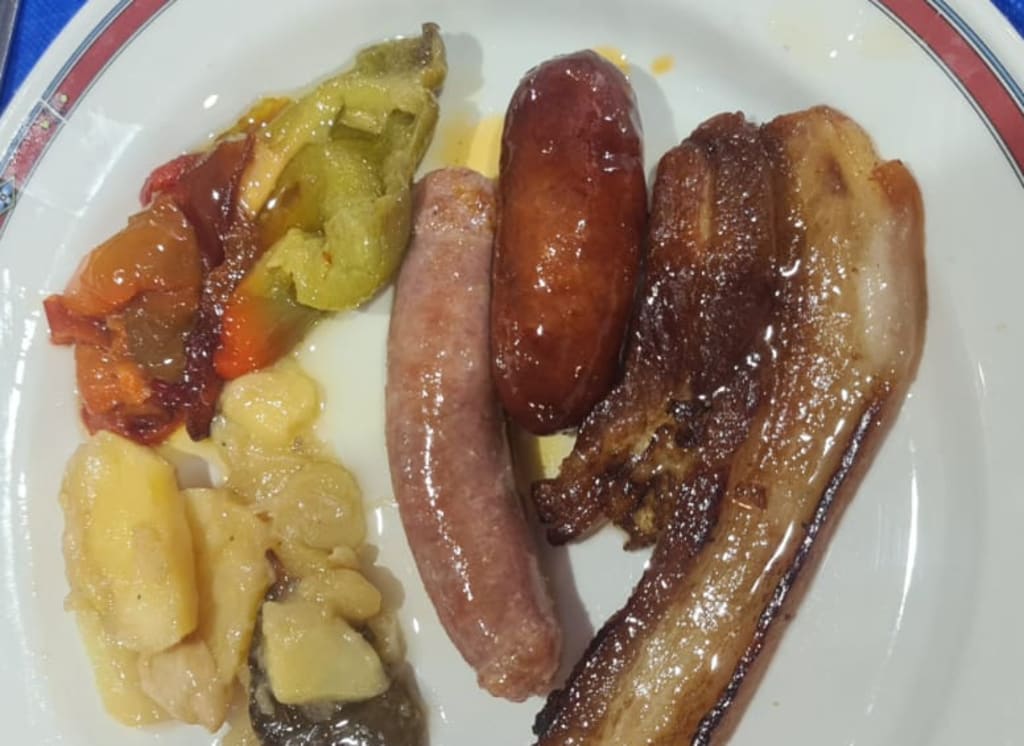
I suppose I should have realised it was an odd-looking sausage. This was supposed to have been a day of truffle and organic honey tasting in the small agricultural town of Ossett in the Community of Valencia, Spain.
I did not expect sausages that were not actually sausages.
Food and drink have a far more elevated position of importance in the Valencia region than boring stuff. Like work. It’s why I came here three years ago and never went back to England.
You won’t find the Valencianos taking ten minutes to knock back fast food washed down with a gallon of cola. Oh no. They’ll spend three hours over a four-course meal with great wine — twice a day not counting breakfast and the 10.30 snack (also with wine!)

Their food is fresh and seasonal and comes with the most amazing flavours. You won’t find much with more flavour than their honey and their truffles.
Truffles are fungi that grow underground on tree roots and are about 30 to 60 grams (1.4 to 2 ounces) in weight when ready. They are sought after for their distinctive flavour and are difficult to find in large numbers. This means they are pricey, selling for between €30-€70 each ($34 to $80) depending on size.
Along with wine, beer, vermouth (wine with spices), oranges, lemons, rice and seafood, Valencia is a major truffle and honey-producing area. I was going honey and truffle tasting.
I also got to taste something else I wasn’t expecting. Or wanting.
Off we go
So off we went, 30 Valencianos and 3 Brits to Ossett, an hour’s coach ride out of Valencia City. If you’re going food tasting, you really need to do it with the locals. And not drive as everything comes with wine.
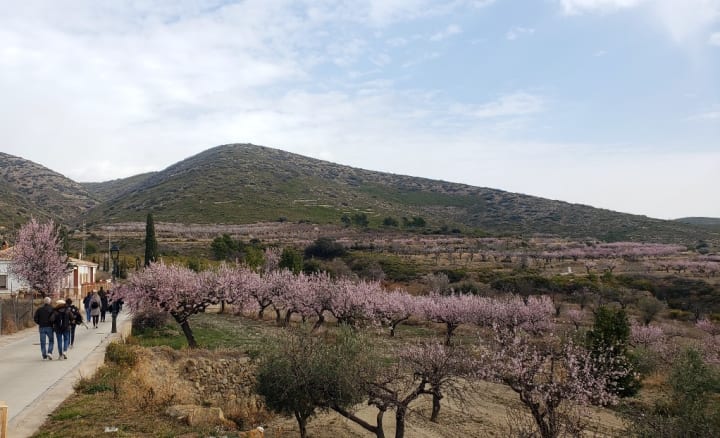
Following the local guide, we trotted off into the Spanish countryside, through the pink blossomed almond tree groves.
I say follow. The 3 Brits did. Several Valencianos were suffering severe withdrawal from missing their 10.30 mid-morning break. They disappeared into a bar.
Once the group leader* had rounded everyone up, some were reluctantly following the guide into the fields with glasses of wine in hand. I suppose it was 11.30.
I had thought the point of the trip was to taste truffles and honey but I’ve still to fully understand the culture here so I may have missed something.
*Leader is el/la líder in Spanish and translates in Valencia to the person who thinks they’re in charge but everyone ignores.
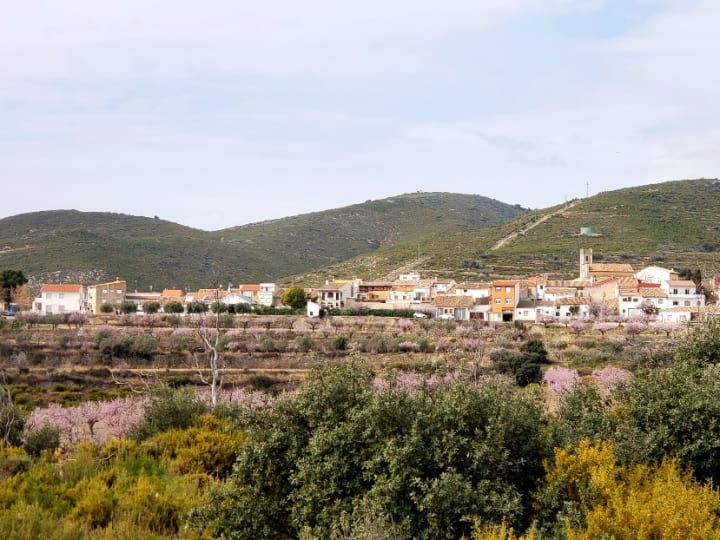
We have truffles
Truffles (trufas in Spanish) are tricky to find so they are located using pigs or dogs.
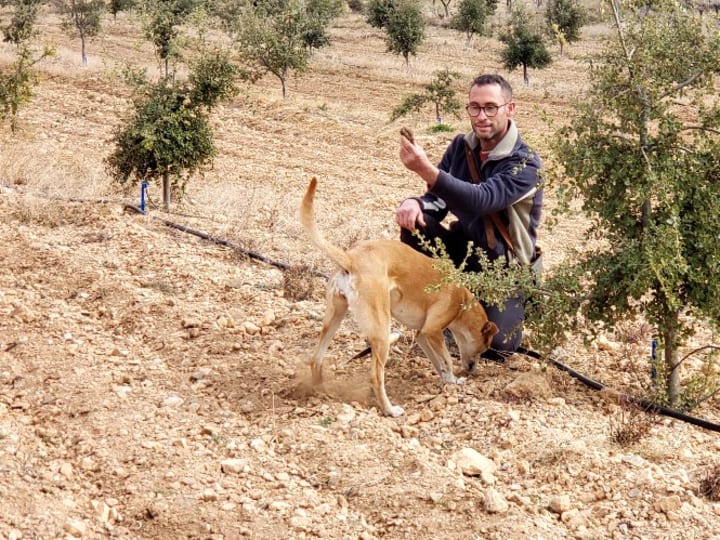
Pigs tend to eat them when they find them which isn’t ideal at €40 or more a pop. So the Spanish use dogs to sniff them out. They still need to stay on top of things. Truffles are tasty and the dog might still have a moment of weakness and gobble it up.
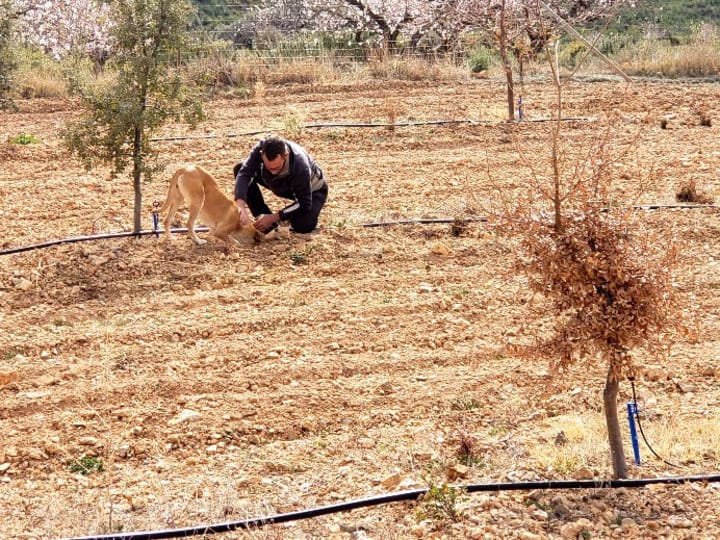
Truffles have a strong earthy smell, naturally. Here’s the one the dog found in the photo above. He just made his owner about €30 in two minutes flat.
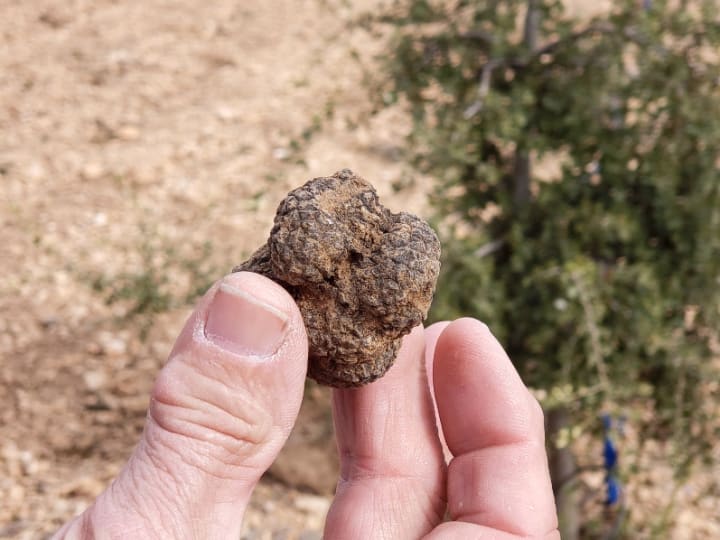
Honey honey
We returned to the village and immediately lost half the group again (Vermouth time). La líder had to round them up again and then we were set for honey tasting.
Honey tasting is like wine tasting but with a sugar rush instead of getting drunk.
First off though, we try truffle on bread with olive oil (organic naturally).
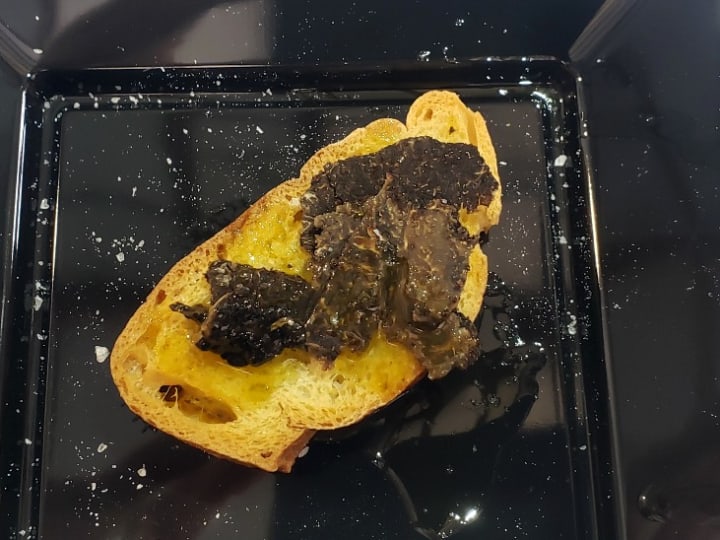
Valencia is a region with a high amount of organic agriculture and the honey is unadulterated by artificial flavours. They use natural herbs, flowers and citruses for flavouring.
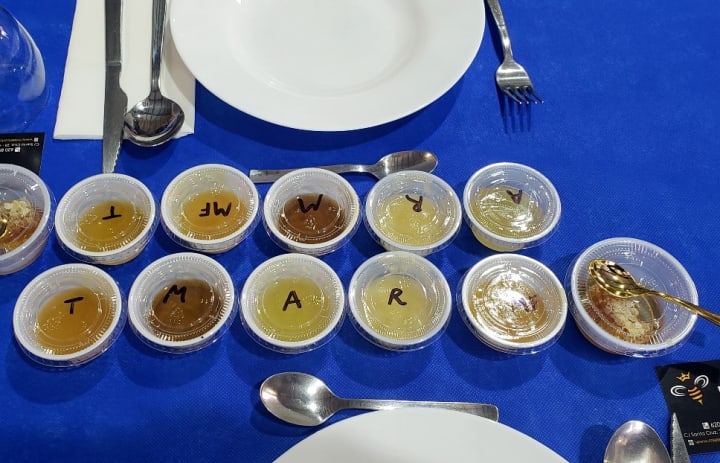
The bees construct a honeycomb in their hive which is made up of perfect identical hexagons. It’s where the bees store the honey. Hexagons are the best use of space.
How they know this and how they can make each hexagon identical and in such a perfect shape is a total mystery.
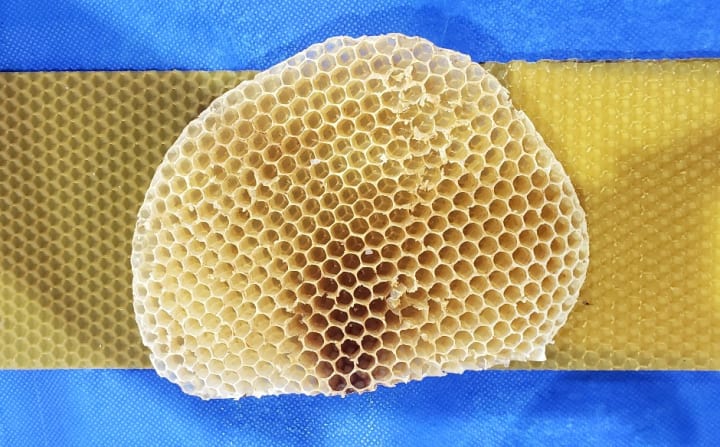
We also tasted the honey directly from the honeycomb.
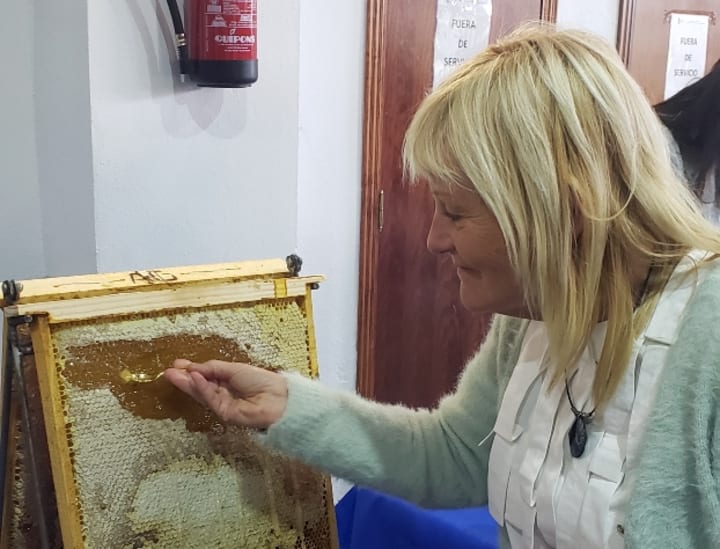
Time for lunch. And an entirely different taste.
Lunchtime
The Spanish are funny (irony here). Knowing they had 3 Brits along, they chose not to explain the contents of the stew until I’d eaten it.
It was just a typical local stew. Looks innocent enough?
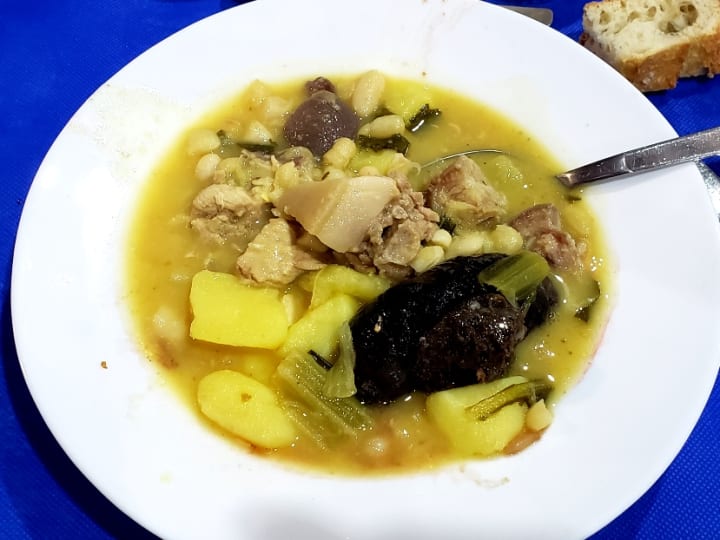
The warning signs were there. I recognised the dark sausage as morcilla — dried blood, yuk. Warning sign 1.
The meat was described as pork (cerdo) but had a weird light consistency and shapes I had never seen before. Warning sign 2. Never mind, I was hungry. Pushing the congealed blood sausage to one side, I polished off the rest.
It was only at this point the locals (they’re so funny) explained that Valencianos don’t like to waste any part of the animal. The meat in the stew was pig’s ears — not good but could be worse. And pig faces — no, not cheek, the whole face — now it’s getting worse.
So what was that short sausage thing with the gristly bone running through it and light fatty meat? Pico, they said. I felt ill. Looking at the photo below, I guess you don’t need a translation.
I noticed they hadn’t eaten the pico in their dishes They’re so funny. Not.
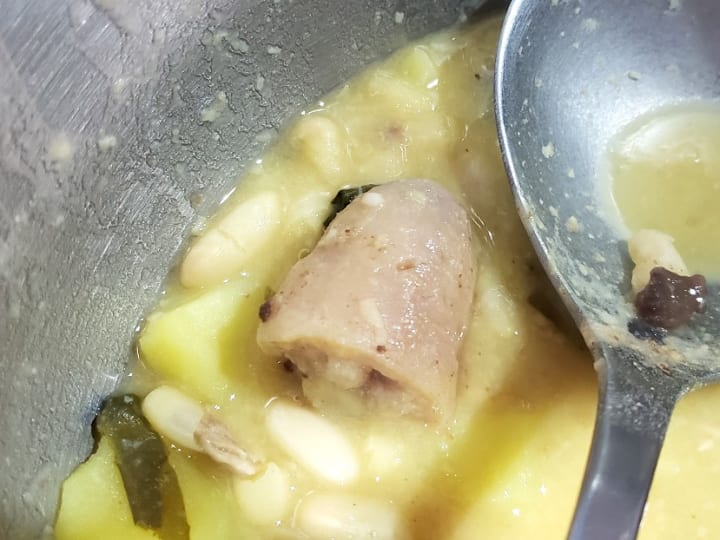
Note — don’t use the word pico in polite Spanish-speaking company. It’s not the medical term.
History
Thankfully, we were off on another hike. This time it was a history hike. I needed to take my mind off the lunch.
Ossett was the front line for the Levante Offensive in the Spanish Civil War. Valencia was the capital of the Republican forces. Franco’s nationalist forces set out to defeat them but were defeated here instead.
Ossett was bombarded by Mussolini's airforce who had joined in on the side of Franco. The locals sought refuge from the aerial bombardments by excavating refuge caves in the cliffs inside a ravine just outside the town.
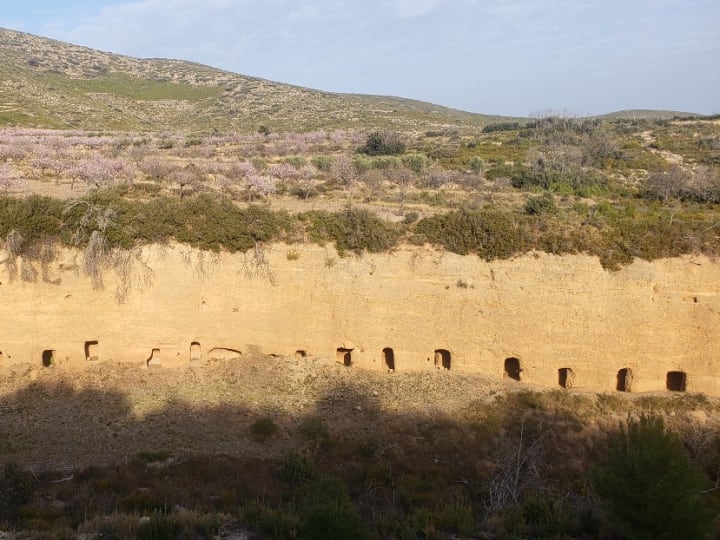

Next time, check before eating
Aside from learning about truffles, bees and some of their civil war history, there was another important lesson learned. Check before you eat because the Spanish don’t waste anything.
Those grasshoppers I tried in Mexico don’t seem so bad now.
(This article first appeared on medium.com)
About the Creator
Alex Markham
Music, short fiction and travel, all with a touch of humour.






Comments
There are no comments for this story
Be the first to respond and start the conversation.